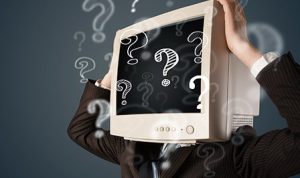Cooling Systems in PCs Air vs Liquid Cooling sets the stage for this enthralling narrative, offering readers a glimpse into a story that is rich in detail and brimming with originality from the outset. As technology advances and gaming demands increase, the way we cool our PCs has become a hot topic. In this exploration, we will delve into the fundamental differences between air and liquid cooling systems, shedding light on their mechanisms, benefits, and suitability for various users and scenarios.
In today’s fast-paced digital landscape, the importance of effective communication cannot be overstated. Whether it’s through emails, social media, or face-to-face interactions, how we convey our messages significantly influences our relationships, both personal and professional. This article delves into the nuances of communication, exploring its various forms, the impact of technology, and how we can enhance our communication skills to foster better connections.### Understanding CommunicationCommunication is the process of exchanging information, thoughts, and feelings between individuals.
It can take many forms: verbal, non-verbal, written, and visual. Each type has its own significance and role in how we interact with others.
1. Verbal Communication
This is perhaps the most recognized form of communication. It involves spoken words and is often characterized by tone, pitch, and pace. Effective verbal communication not only delivers information but also conveys emotions and intentions.
2. Non-verbal Communication
Often underestimated, non-verbal cues such as body language, facial expressions, and gestures play a crucial role in how our messages are interpreted. For instance, crossing arms can signal defensiveness, while maintaining eye contact can indicate confidence and engagement.
3. Written Communication
In an age dominated by digital interactions, written communication has become vital. Emails, text messages, and social media posts are common mediums through which we express ourselves. The challenge here lies in ensuring clarity and tone, as written words lack the vocal inflections that can provide context.
4. Visual Communication
This form includes images, graphs, charts, and videos. Visual elements can enhance understanding and retention of information, making them powerful tools in presentations and marketing.### The Role of Technology in CommunicationWith the advent of technology, the landscape of communication has shifted dramatically. Instant messaging apps, video calls, and social media platforms have revolutionized how we connect. While these advancements offer convenience and immediacy, they also come with challenges.
Pros of Digital Communication
Instant Connectivity
Technology allows us to communicate in real-time, breaking geographical barriers and enabling conversations across the globe.
Diverse Channels
From emails to social media, there are various channels through which we can communicate, catering to different preferences and situations.
Access to Information
Digital platforms provide a wealth of information at our fingertips, facilitating informed discussions and decision-making.

Cons of Digital Communication
Misinterpretation
Without non-verbal cues, messages can easily be misunderstood, leading to conflicts or confusion.
Over-reliance on Technology
The ease of digital communication may lead to a decline in face-to-face interactions, which are essential for building strong relationships.
Information Overload
The sheer volume of information available can be overwhelming, making it challenging to focus on what truly matters.### Enhancing Communication SkillsImproving our communication skills is essential for personal and professional growth. Here are some practical tips to enhance how we convey our messages:
1. Active Listening
Effective communication is a two-way street. Practicing active listening—fully concentrating, understanding, responding, and remembering what is being said—can significantly improve interactions.
2. Be Clear and Concise
Whether speaking or writing, clarity is key. Avoid jargon and overly complicated language. Aim to convey your message in as few words as possible while still retaining its essence.
3. Adapt Your Style
Different situations and audiences may require different communication styles. Being adaptable and recognizing when to be formal or informal can go a long way in making your message resonate.
4. Seek Feedback
Constructive criticism can provide valuable insights into how your communication is perceived. Encourage feedback from colleagues, friends, or family to identify areas for improvement.
5. Practice Empathy
Understanding and acknowledging others’ perspectives can foster better communication. Empathy allows us to connect on a deeper level, making conversations more meaningful.
6. Utilize Technology Wisely
While technology is a powerful tool, it’s crucial to use it mindfully. Choose the most appropriate medium for your message and be aware of the potential pitfalls of digital communication.### ConclusionIn a world where communication is constantly evolving, it is vital to prioritize and refine our skills. By understanding the various forms of communication, acknowledging the influence of technology, and implementing strategies to enhance our abilities, we can foster stronger connections in both our personal and professional lives.
Remember, effective communication is not just about speaking or writing; it’s about making meaningful connections and understanding others.As we navigate this intricate web of interactions, let us strive to be mindful communicators, ensuring that our messages are not only heard but also understood and appreciated. This commitment to effective communication can lead to a more harmonious and productive society, where ideas flourish and relationships thrive.





